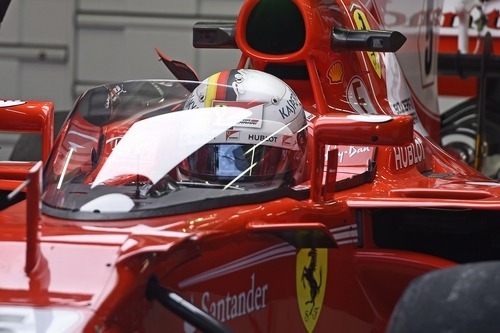
Sebastian Vettel will become the first Formula One driver to test the new “Shield” head protection system, with the Ferrari team having fitted the concept to the car ahead of the first free practice session for the 2017 British Grand Prix at Silverstone. This is the first time that the concept has been seen outside of a computer generated image.

The concept is the replacement for the previously tested “Halo” system, which attracted a lot of negative opinions from fans and drivers. The new “Shield” concept is believed to be a better alternative that will provide the drivers with the necessary protection, while not hurting the aesthetics of the cars. The concept is expected to be officially implemented for the 2018 season.
However, with the halfway point in the rapidly approaching, it seems a little too optimistic to say that the system will be ready in time for next season. It has had no track testing and is expected to only spend a few laps on the Ferrari before it gets removed. It seems impossible to be able to accurately and fully test a safety device like this before the deadline for the 2018 Formula One Technical Regulations.
Head protection has become a hot topic in motorsport in response to the fatal accidents of Jules Bianchi at the 2014 Japanese Grand Prix and Justin Wilson in an Indycar race at Pocono. But the system has had mixed reviews from the fans, with some feeling that Formula One is safe enough and others feeling that the sport should prevent all deaths.
Former racing driver David Brabham spoke with Racing Clothesline ahead of the 2016 season regarding the Halo head protection designs. He felt that “more research is needed” and stressed the importance that the sport doesn’t have a “panic reaction” to the head protection issue.
With work on the head protection system having been ongoing for the past few years, some may believe that the system has had enough testing and is ready to go live in Formula One. However, it’s important to remember that the Shield concept is fairly new and, with no actual track testing, the safety engineers are back to square one.